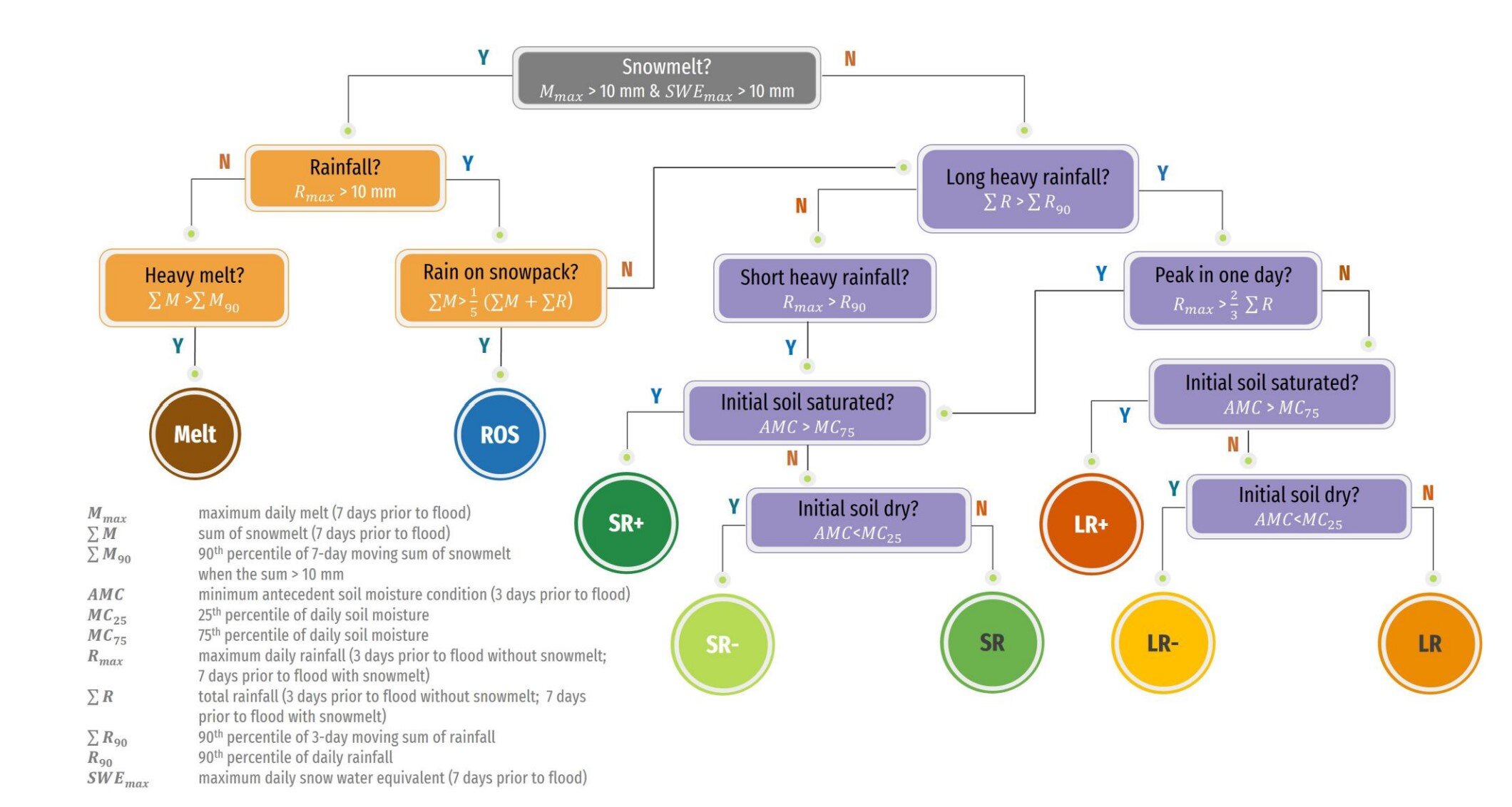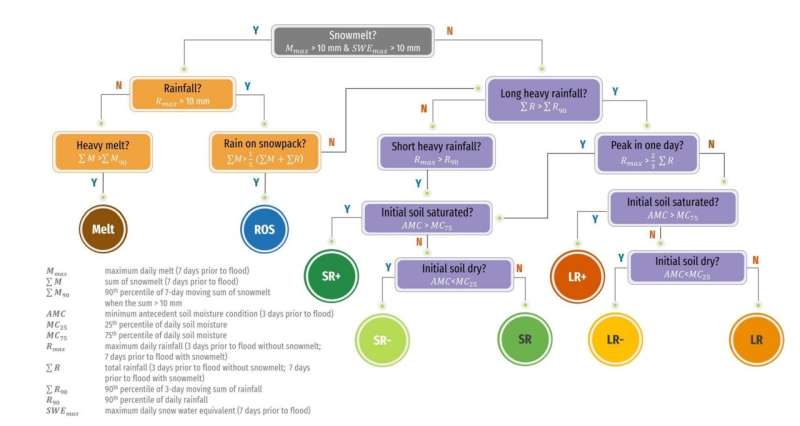

The Delaware River Basin, a coastal watershed in the Mid-Atlantic region, has a long history of severe flooding with significant socioeconomic impacts. Recent research uses a process-based modeling approach to analyze hydrometeorological (like rainfall, snowmelt, and soil moisture) conditions during flood events over the past 40 years, revealing the spatial variability of flood mechanisms across the region.
The work is published in the journal Earth’s Future.
In the Upper Basin, high-elevation subbasins predominantly experience early spring floods due to rain-on-snow events, while the Lower Basin is primarily affected by floods from short, intense rainfall events with no strong seasonal pattern. Future flood projections based on climate scenarios suggest a region-wide intensification of flooding (i.e., greater peak discharge). Importantly, the anticipated shift in the Upper Basin’s primary flood mechanism from rain-on-snow to intense short rainfall events, exacerbated by wetter antecedent soil moisture conditions, points to an evolving flood risk and timing landscape.
Consequently, this highlights the pressing need for adaptive flood management strategies in anticipation of these evolving conditions.
The Delaware River Basin is home to over 8 million people, many of whom live in areas at risk of flooding. In recent years, floods have caused huge losses, with three major events in 2004, 2005, and 2006 costing around $745 million in New York, New Jersey, and Pennsylvania. Looking ahead, the projected warmer and wetter climate in the region is anticipated to significantly intensify the severity of future flooding.
Additionally, future floods are expected to occur more sporadically throughout the year, in contrast to historical floods in the high-elevation Upper Basin that occur most often in spring due to rain-on-snow events. This evolving flood risk and temporal shift, driven by climate change, pose greater challenges for future flood management efforts.
The Delaware River Basin faces significant flood risks stemming from diverse flood-generating mechanisms influenced by changing topography from mountains to coastal plains. Understanding flood processes at the subbasin level is crucial for predicting downstream flood risks, as downstream flooding results from the nonlinear aggregation of upstream processes.
The study used a process-based hydrological model to analyze past and future floods at the subbasin level. The researchers identified the dominant generating mechanism for each flood event, such as snowmelt, rain-on-snow (ROS), short-duration rainfall under varying antecedent soil moisture condition, such as dry (SR−), normal (SR), or wet (SR+), and long-duration rainfall under similar moisture conditions. Historically, ROS caused the most flooding events in the Upper Basin, while SR dominated the Lower Basin.
Future flood projections under 20 General Circulation Model (GCM) scenarios commonly indicate more severe floods across the region. In the Upper Basin, SR+ floods are projected to have the largest increase in extreme flood magnitude, ranging from 71% to 114% across its subbasins according to the average GCM scenarios. In the Lower Basin, SR floods are projected to have the largest increase, ranging from 63% to 113%.
This varied increase in flood severity, quantified for both the upper and lower parts of the basin, underscores the complex challenge of preparing for future floods. Despite these consistent trends among the GCM scenarios, notable discrepancies exist in projected changes in flood frequency and magnitude. This highlights the need to account for uncertainties in climate projections when developing flood management strategies and planning infrastructure to accommodate future climatic conditions.
More information:
Ning Sun et al, Amplified Extreme Floods and Shifting Flood Mechanisms in the Delaware River Basin in Future Climates, Earth’s Future (2024). DOI: 10.1029/2023EF003868
Provided by
Pacific Northwest National Laboratory
Citation:
Future climate change predicted to shift flood-generating mechanisms and intensify extreme flooding events (2024, September 26)
retrieved 26 September 2024
from https://phys.org/news/2024-09-future-climate-shift-generating-mechanisms.html
This document is subject to copyright. Apart from any fair dealing for the purpose of private study or research, no
part may be reproduced without the written permission. The content is provided for information purposes only.